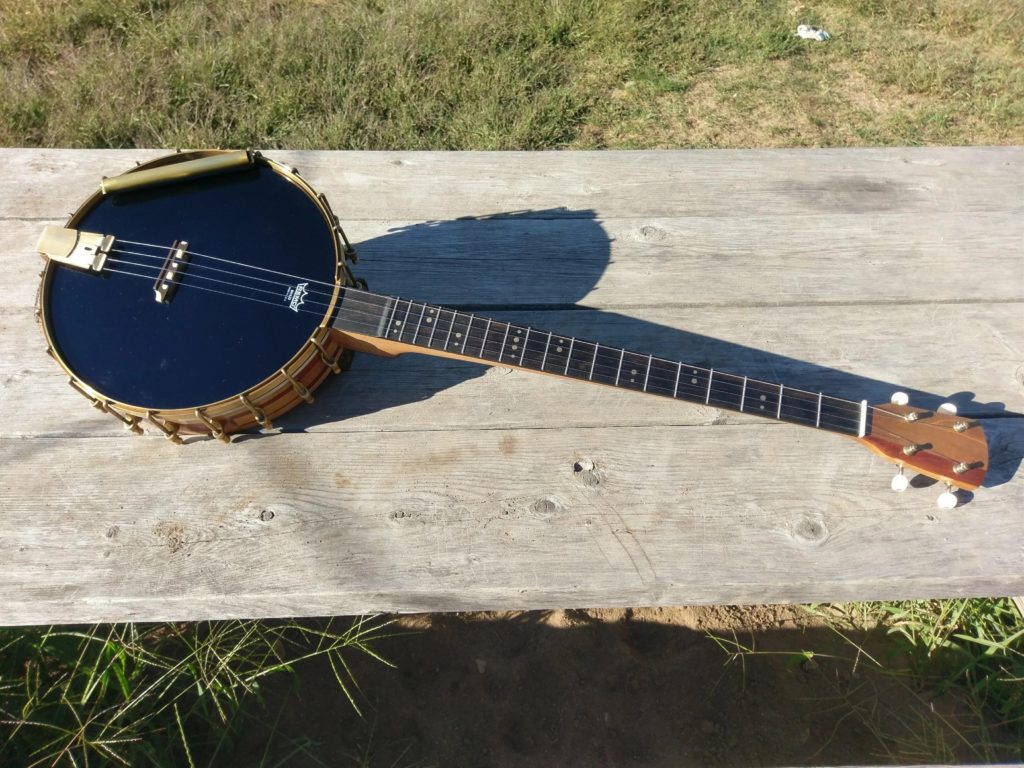The plectrum banjo, a distinctive four-stringed instrument played with a pick, has a captivating history deeply rooted in the evolution of American music. Emerging in the early 20th century to meet the demands of changing musical styles, especially in jazz and ragtime, the plectrum banjo played a pivotal role in genres like Dixieland jazz. This article provides a concise exploration of the instrument’s development, its rise to prominence, and its enduring legacy in shaping the sounds of American music. Join us as we take a brief journey through the intriguing history of the plectrum banjo.

The History of the Plectrum Banjo
The plectrum banjo is a four-stringed musical instrument that is played with a pick or plectrum. Its history is closely tied to the evolution of the banjo as a whole. The banjo itself has roots in African instruments brought to the Americas through the transatlantic slave trade. Over time, the banjo underwent various transformations and adaptations, becoming a popular instrument in American folk and popular music.
The plectrum banjo specifically emerged in the early 20th century as a result of changes in playing styles and musical preferences. The earlier banjos were often played with fingerpicking techniques, but as musical styles evolved, particularly in the context of jazz and ragtime music, there was a demand for a banjo that could produce a louder sound and keep up with other instruments in ensemble playing.
The plectrum banjo typically has a shorter neck compared to the traditional five-string banjo, which makes it easier to play with a pick. It usually has a scale length similar to the tenor banjo but lacks the shorter fifth string. The plectrum banjo became popular in the jazz scene during the 1920s and 1930s, where it was frequently used in dance bands and other ensembles.
With its brighter and louder sound, the plectrum banjo found its niche in various music genres, including Dixieland jazz, swing, and traditional jazz. Musicians like Eddie Peabody, Harry Reser, and others helped popularize the instrument during its heyday. However, as musical tastes changed, the popularity of the plectrum banjo declined over the decades.
While it may not be as widespread today, the plectrum banjo still has a place in certain musical genres and among enthusiasts who appreciate its unique sound and historical significance in the development of American music.
What is the difference between a 5-string banjo and a plectrum banjo?
The primary differences between a 5-string banjo and a plectrum banjo lie in their construction, tuning, and playing styles:
- Number of Strings:
- 5-String Banjo: As the name suggests, a 5-string banjo has five strings. These typically include four long strings tuned to specific pitches and a shorter fifth string that runs halfway up the neck and is often tuned to a higher pitch. The fifth string is usually plucked or “picked” with the thumb.
- Plectrum Banjo: Plectrum banjos, on the other hand, have four strings. They lack the shorter fifth string found on 5-string banjos.
- Tuning:
- 5-String Banjo: The 5-string banjo is commonly tuned in an open G tuning (gDGBD), with the fifth string providing a high-pitched drone note. However, there are various tunings used in different styles of music.
- Plectrum Banjo: Plectrum banjos are typically tuned in CGBD, which is similar to the top four strings of the 5-string banjo but without the shorter fifth string. This tuning allows for a brighter and punchier sound.
- Neck Length:
- 5-String Banjo: 5-string banjos often have a longer neck to accommodate the additional fifth string. The neck may also feature a different scale length compared to plectrum banjos.
- Plectrum Banjo: Plectrum banjos generally have a shorter neck than 5-string banjos, making them easier to play with a pick. The absence of the shorter fifth string contributes to this difference in neck length.
- Playing Style:
- 5-String Banjo: The 5-string banjo is known for its versatility and is commonly used in various genres, including bluegrass, folk, and old-time music. It allows for intricate picking and is often played in a fingerstyle technique.
- Plectrum Banjo: Plectrum banjos are well-suited for strumming and chordal playing. They found popularity in jazz and swing music, where a bright and percussive sound was desirable. Plectrum banjo players often use a flat pick for playing.
In summary, while both the 5-string banjo and plectrum banjo share a common ancestry, they have evolved to cater to different musical styles and preferences, with variations in the number of strings, tuning, neck length, and playing techniques.

